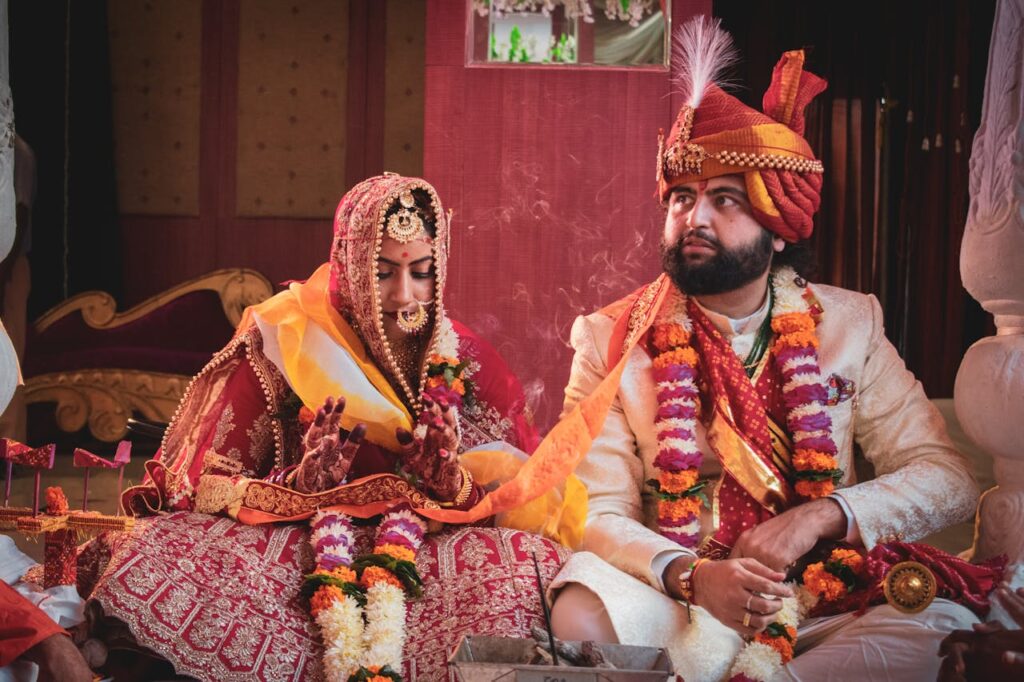10 Traditional Wedding Outfits from Around the World: A Celebration of Cultural Diversity
Weddings are significant cultural events that reflect the traditions, values, and history of different societies. Traditional wedding outfits often serve as vibrant symbols of cultural heritage and diversity. Here, we explore ten traditional wedding attires from various parts of the world, each with its unique beauty and significance. 1. India: Sari and Sherwani In India, traditional wedding attire varies by region but often includes the sari for brides and the sherwani for grooms. The sari, a long piece of cloth draped elegantly around the body, is typically made of silk and adorned with intricate embroidery and embellishments. The color red is popular as it symbolizes prosperity and fertility. Grooms often wear a sherwani, a long coat-like garment, paired with churidar pants and a turban, symbolizing regal elegance. 2. Japan: Shiromuku and Montsuki Japanese traditional wedding attire includes the shiromuku for brides and the montsuki for grooms. The shiromuku is a white silk kimono that symbolizes purity and a new beginning. It is often paired with a wataboshi, a hood that covers the bride’s hair. Grooms wear a montsuki, a formal kimono with the family crest, hakama pants, and a haori jacket, symbolizing dignity and respect. 3. China: Qipao and Changshan In China, the qipao or cheongsam is a traditional dress worn by brides. It is usually red, symbolizing luck and happiness, and is often embroidered with gold and silver thread. Grooms typically wear the changshan, a long robe paired with a jacket, often in matching colors to the bride’s outfit. These garments signify harmony and unity. 4. Nigeria: Aso Oke and Agbada Nigerian weddings are colorful affairs, with brides wearing the Aso Oke, a handwoven cloth made from natural fibers. The ensemble includes a blouse (buba), a wrap skirt (iro), and a head tie (gele). Grooms wear the agbada, a wide-sleeved robe, often made from the same fabric as the bride’s attire. These outfits celebrate the richness of Yoruba culture and tradition. 5. Scotland: Highland Dress Scottish grooms often wear the Highland dress, which includes a kilt made of tartan fabric, representing the groom’s clan. The outfit is complemented by a sporran (a pouch), a jacket, and knee-high socks. Brides may wear a white gown, sometimes with a tartan sash, integrating their heritage into modern wedding attire. 6. South Korea: Hanbok In South Korea, the hanbok is the traditional wedding attire. Brides wear a jeogori (a short jacket with long sleeves) over a chima (a full, wrap-around skirt), while grooms wear a similar jeogori over baji (trousers) and an overcoat called durumagi. The vibrant colors and simple lines of the hanbok represent elegance and the beauty of Korean culture. 7. Ghana: Kente Cloth Ghanaian weddings are renowned for their use of kente cloth, a handwoven fabric with vibrant colors and geometric patterns. Brides and grooms both wear outfits made from kente, often tailored into elaborate designs. Each pattern and color in the kente cloth has symbolic meanings, reflecting aspects of their heritage, values, and history. 8. Norway: Bunad In Norway, the bunad is a traditional costume worn at weddings. Each region has its own style of bunad, characterized by specific colors, patterns, and embroidery. Brides often wear a white or silver crown, symbolizing purity and maidenhood, while grooms wear a bunad that complements the bride’s attire. The bunad showcases Norwegian craftsmanship and regional pride. 9. Morocco: Kaftan and Djellaba Moroccan brides often wear a kaftan, a long, flowing robe made of luxurious fabrics such as silk or velvet, adorned with intricate embroidery and embellishments. Grooms typically wear a djellaba, a hooded robe that is both elegant and comfortable. These outfits reflect the rich cultural heritage and the influence of Islamic art in Moroccan traditions. 10. Mexico: Charro Suit and Traditional Dress In Mexico, the charro suit is a traditional outfit for grooms, featuring a tailored jacket and pants with silver buttons, often accompanied by a wide-brimmed sombrero. Brides may wear a traditional white dress with lace and colorful embroidery, integrating indigenous and Spanish influences. These outfits celebrate Mexico’s vibrant cultural history. Conclusion Traditional wedding outfits from around the world showcase the beauty and diversity of cultural heritage. Each ensemble tells a story of traditions, values, and artistry passed down through generations. By embracing these diverse wedding attires, we celebrate not only the union of two individuals but also the rich tapestry of human culture
